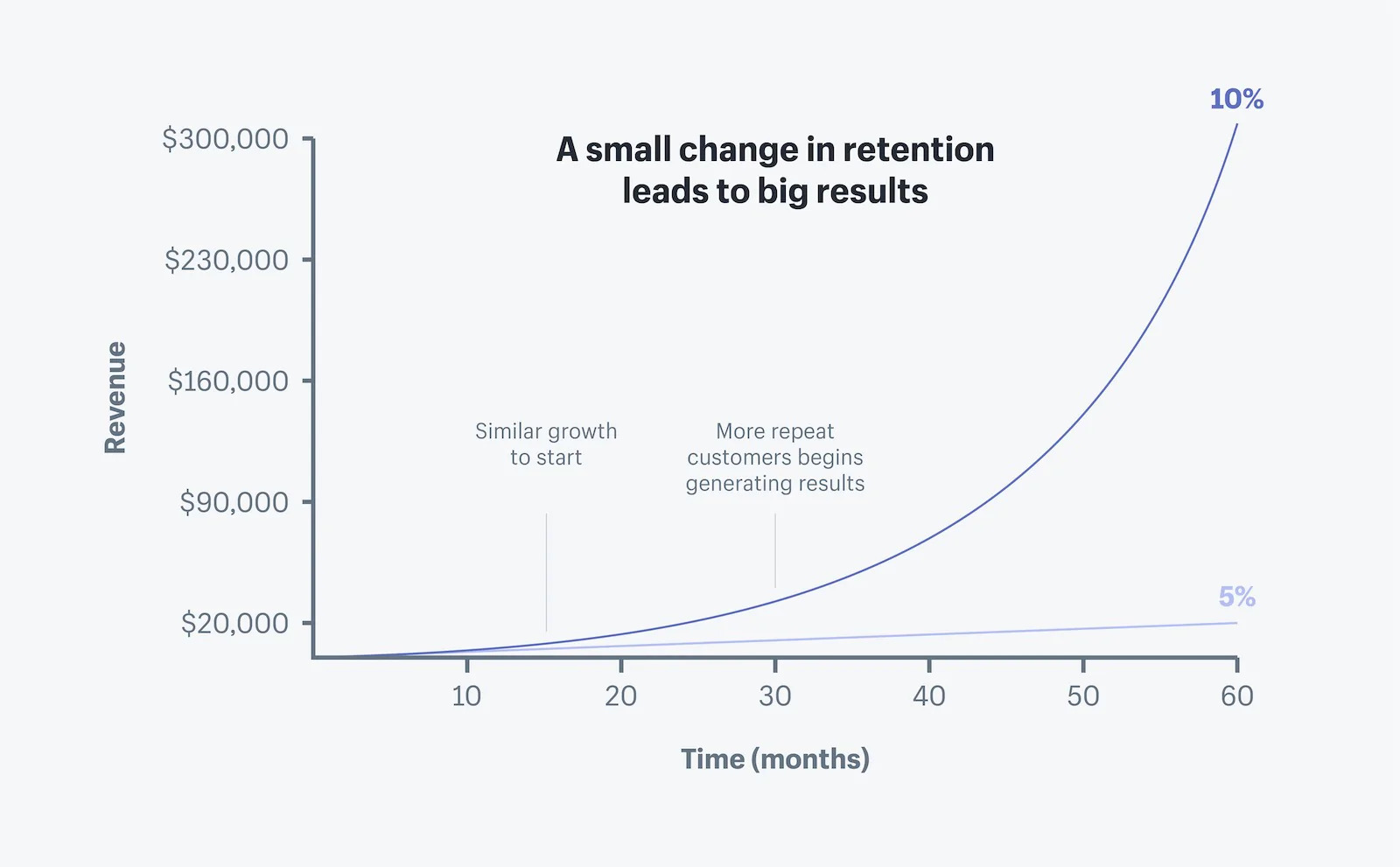
The 4 Greatest Retention Strategies For Your Native Mobile App
The 4 Greatest Retention Strategies For Your Native Mobile App
Nov 1, 2022Customer acquisition and retention define an app's growth.
While many brands focus on acquisition, few prioritize retention. As acquisition costs increase and ROAS diminishes, retention becomes increasingly important.
With the holiday season approaching, building your customer retention system is critical.
But why should you pay attention to your retention rate?
Churn rate
Churn rate is the number of people who stop doing business after a certain period. The churn rate for most apps is astronomical.
According to Localytics, 21% of app users abandon an app after only using it once. This statistic is an average of over 37,000 apps from each category.
For eCommerce apps, the average churn rate is even higher. 86% of shopping app users churn within four weeks of downloading the app.
Hence, in a single month, most brands waste 86% of their customer acquisition budget. Hence, the customer’s Lifetime Value (LTV) and Average Order Size (AOV) will be incredibly low.
Retention increases LTV and AOV
Low retention rates force brands to constantly retarget customers. This weak monetization reduces growth and profit. The retargeting campaigns also use discounts and special offers, which also reduce profitability.
Retention develops one-time customers into repeat customers. Removing the costs and increasing LTV.
Gradually, customers begin to trust the brand and develop a relationship. This increases their AOV, resulting in higher profits.
Shopify has helpfully demonstrated this in the graph below. For example, each store has 100 customers buying a $10 item each month.
Each month, the light purple store retains 5% of those customers, while the dark purple store retains 10%. As you can see, a 5% increase can result in rapid growth that is difficult to match through acquisition alone.

TLDR; It’s cheaper to get repeat purchases than it is to find new customers. Even minor changes in retention yield significant results.
Solid Base
Retention has many other non-monetary benefits.
Customer retention creates a loyal customer base. These customers create a foundation for a company’s future income. This nearly guaranteed income increases your brand’s risk capacity.
Brands leverage this security to experiment without adversely impacting the brand's profitability.
For example, Apple has one of the most loyal customer bases in the world. This enables them to experiment without risking their market position or profit margins.
Loyal customers also make repeat purchases without prompting. These regular purchases provide the company with a consistent source of revenue. This recurring revenue assists the company in establishing and developing its market position.
Finally, loyal customers also serve as brand ambassadors. Loyal customers generate word-of-mouth and increase the brand’s presence. They shape brand perception and generate social proof that leads to conversions.
Now that we understand why retention is important, what strategies can we use to improve it?
The 4 Great Retention Strategies:
Effective Onboarding
The first step in increasing retention is to create an efficient onboarding process.
Most brands overlook this step. Many believe that onboarding simply entails creating customer accounts. Or, they may have had a bad customer onboarding experience and want to avoid it for their app.
But customer onboarding is a crucial step for making the customer invested in the app. It also simplifies out the navigation and checkout process.
The onboarding process should be simple yet effective. It must guide customers through the key features.
For example, the app can prompt users to make an account after a sale via Social logins. This increases the likelihood of completing the sale & simplifies the checkout process.
Another example is a tutorial that highlights the app's customer loyalty program. It can also provide discounts to encourage users to keep using the app.
Personalize the User Experience
Personalizing the user experience is a common but underutilized tactic.
Retention is a proactive process. It requires brands to analyze and adapt their offerings to their customer’s wants and needs. Hence, brands should use the data they collect to retain users.
For example, brands should bundle products together to encourage more sales.
A useful tool to help personalize user experience is segmentation. Segmentation divides your audience into homogeneous groups. This enables the brand to target each one individually.
Customers should be segmented based on their behavioral data. This includes psychographic characteristics, frequency, and AOV. To maximize impact, brands should tailor their message and campaign to the segment.
Loyalty Program
Customers are influenced by incentives. Brands reward current loyal customers while also incentivizing future customers by rewarding loyalty.
Loyalty programs are extremely effective at encouraging repeat purchases. They also influence one-time customers into repeat customers. Furthermore, it helps customers form a relationship with the brand.
Many brands may argue against a loyalty program due to the short-term losses that occur. Loyalty programs require discounts, special offers, and unique bundles.
However, the data shows that these sacrifices are well worth it. Long-term LTV and AOV growth from loyalty programs recovers short-term losses. And result in higher overall profits.
Re-engagement campaigns
Re-engagement campaigns are a popular retention strategy. Re-engagement campaigns target previous customers to take specific actions. It is also useful to A/B test an app's redesign and improvements.
These campaigns not only bring back customers but also generate customer insights.
Push notifications are a popular way to re-engage users. Push notifications are extremely effective.
They have a higher rate of engagement than email and SMS. They can be sent an unlimited number of times for free. Push notifications can prompt users to launch and interact with the app.
However, push notifications must be optimized. They should be tailored to your users' needs, behavior, and interests.
The timing of the notifications is also important. Improperly timed notifications can create negative associations, increasing churn.
Unlock Your Store's Full Potential – Discover How with a Free Demo
Get in touch© 2023 Appbrew. All rights reserved.
Privacy Policy